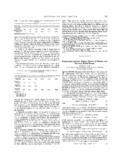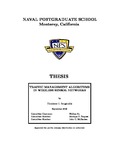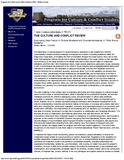Connection between fusion theory of bosons and nonlocal field theory
| dc.contributor.author | Watanabe, Satosi | |
| dc.date.accessioned | 2016-01-20T16:50:08Z | |
| dc.date.available | 2016-01-20T16:50:08Z | |
| dc.date.issued | 1953 | |
| dc.identifier.citation | Letters to the editor, 1953, pp. 771-772. | en_US |
| dc.identifier.uri | https://hdl.handle.net/10945/47608 | |
| dc.description.abstract | Following the original idea of de Broglie, the quanta of a pseudoscalar field and a vector field are considered as composite particles resulting from the "fusion" of a spinor particle and its antiparticle. As Heisenberg emphasized, we have to assume an attractive force of yet unknown nature between the constituent particles in order that such a fusion theory may become physically meaningful. If the pair of component fermions are thus performing relative motion, it is to be expected that the resulting boson field can be described as a kind of nonlocal field in the sense of Yukawa's theory. The aim of the present work is to demonstrate by an example the mathematical feasibility of such correlation of the fusion theory with the nonlocal field theory. | en_US |
| dc.format.extent | 2 p. | en_US |
| dc.rights | This publication is a work of the U.S. Government as defined in Title 17, United States Code, Section 101. Copyright protection is not available for this work in the United States. | en_US |
| dc.title | Connection between fusion theory of bosons and nonlocal field theory | en_US |
| dc.type | Article | en_US |
| dc.contributor.corporate | Naval Postgraduate School (U.S.) | en_US |
| dc.contributor.department | Physics | en_US |
| dc.description.distributionstatement | Approved for public release; distribution is unlimited. |





